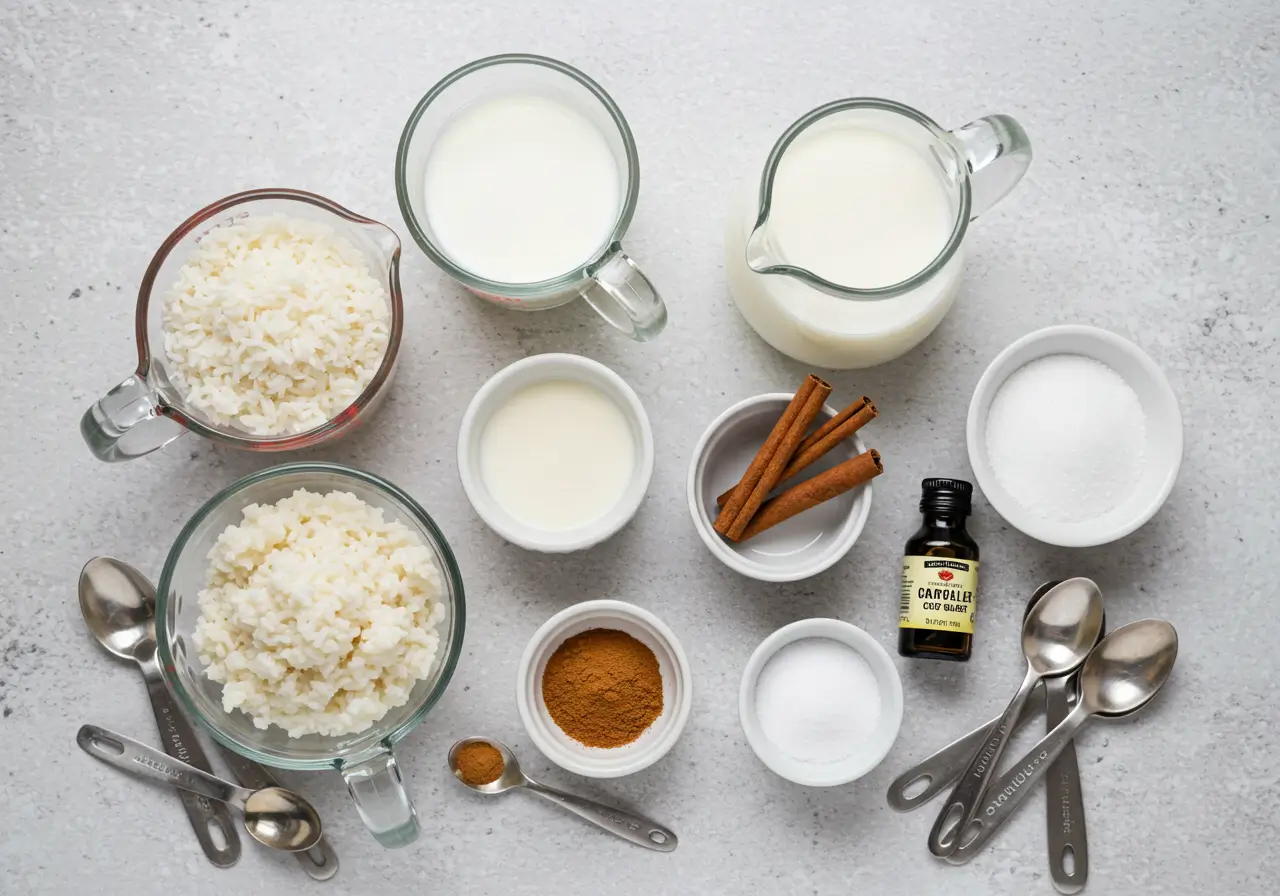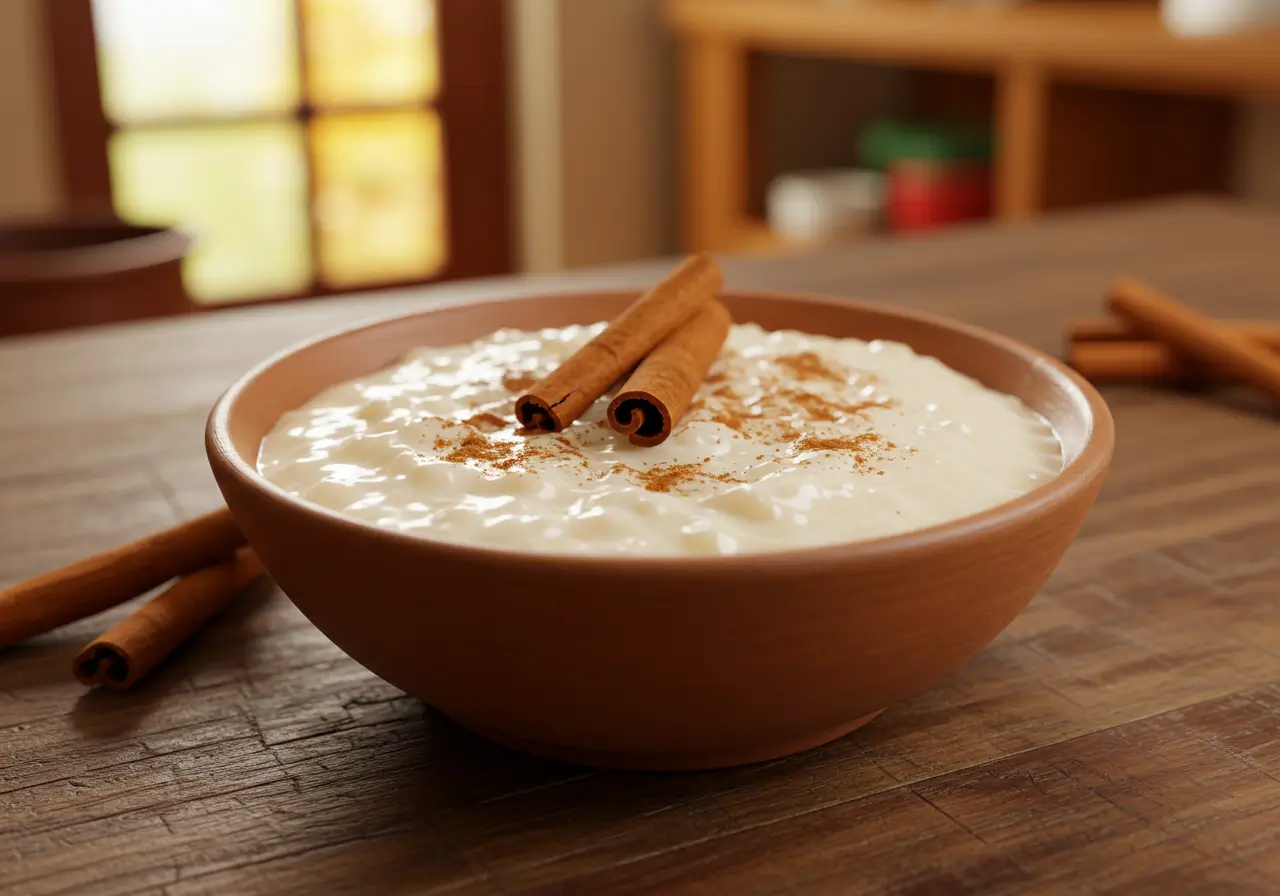If there’s one dessert that instantly brings comfort and nostalgia to Latin American households, it’s arroz con leche recipe. This classic rice pudding is more than just a sweet treat—it’s a symbol of family, warmth, and tradition. In this article, you’ll uncover a full breakdown of the arroz con leche recipe, including ingredients, step-by-step instructions, regional twists, storage tips, and even ways to adapt it for different diets.
From the creamy richness of sweetened milk to the cozy aroma of cinnamon, you’ll learn not only how to cook it but also how to truly master it. Whether you’re brand new to this dessert or looking to elevate your current version, you’re in the right place.
Now, let’s dive into the roots of this beloved dish.
Introduction to Arroz con Leche Recipe
What is Arroz con Leche Recipe?
At its core, arroz con leche is a creamy rice pudding made by simmering rice in milk, sugar, and spices like cinnamon or vanilla. It’s one of the most popular Latin American desserts and has roots in both Spanish and Moorish cuisines. While the basic arroz con leche recipe is simple, its rich flavor and comforting texture make it a timeless favorite.
Interestingly, this dish has crossed borders and cultures, appearing in slightly different forms in Spain, Mexico, Colombia, and even parts of Asia. What makes it stand out, though, is its smooth, thick consistency and the perfect balance between sweet and spicy. Whether served warm or cold, it’s a soul-satisfying dessert that brings joy in every bite.
Cultural Significance Across Latin America
Though many cultures have their own versions of rice pudding, the Latin American arroz con leche holds a special place. In countries like Mexico, it’s often served during celebrations, holidays, or simply as a comfort food after dinner. In Peru, it’s paired with mazamorra morada (a purple corn pudding). In Cuba and Puerto Rico, raisins and lemon or orange zest often make their way into the mix.
This isn’t just a dish; it’s a story passed down from abuelitas to grandchildren. Families personalize the arroz con leche recipe depending on what’s available or what traditions they grew up with. And that’s what makes it so magical—it’s familiar yet always a little different.
Ingredients for the Perfect Arroz con Leche Recipe
Essential Components: Rice, Milk, and Sweeteners

To craft the quintessential arroz con leche recipe, you’ll need a few staple ingredients:
- Rice: Long-grain white rice is commonly used for its ability to hold shape while absorbing flavors.Muy Delish | Authentic Mexican Recipes
- Milk: Whole milk provides a creamy base. Some variations incorporate evaporated or condensed milk for added richness.
- Sweeteners: Granulated sugar is traditional, but alternatives like brown sugar or piloncillo can add depth.Mexico News Daily
These components form the foundation of this beloved rice pudding.
Optional Add-ins: Raisins, Citrus Zest, and Spices
Enhance your arroz con leche by incorporating:
- Raisins: Add a chewy texture and natural sweetness.
- Citrus Zest: Lemon or orange zest introduces a refreshing note.
- Spices: Cinnamon sticks and vanilla extract are classic additions that infuse warmth and aroma.
These optional ingredients allow for personalization, making each arroz con leche recipe unique.

Authentic Arroz con Leche Recipe
Ingredients
- 1 cup white rice
- 4 cups whole milk
- 1 cup water
- 1 cinnamon stick
- 1/2 cup sugar
- 1 teaspoon vanilla extract
- Ground cinnamon for garnish
Instructions
- Rinse the rice under cold water until the water runs clear.
- In a large saucepan, combine rice, water, and cinnamon stick. Bring to a boil.
- Reduce heat to low, cover, and simmer until water is absorbed.
- Add milk and sugar to the rice. Cook over medium heat, stirring constantly until the mixture thickens.
- Remove from heat, stir in vanilla extract.
- Serve warm or chilled, garnished with ground cinnamon.
Step-by-Step Arroz con Leche Recipe

Preparing the Rice Base
- Rinse the Rice: Start by rinsing 1 cup of long-grain white rice under cold water until the water runs clear. This removes excess starch, preventing clumping.
- Cook the Rice: In a large saucepan, combine the rinsed rice with 2 cups of water and a cinnamon stick. Bring to a boil over medium heat, then reduce to a simmer. Cook until the water is absorbed and the rice is tender, about 15 minutes.
Infusing Flavors with Cinnamon and Vanilla
- Add Milk and Sweeteners: Stir in 4 cups of whole milk, 1 cup of sugar, and 1 teaspoon of vanilla extract. For a richer flavor, consider adding 1 can of evaporated milk or sweetened condensed milk.
- Simmer the Mixture: Continue to cook over low heat, stirring frequently to prevent sticking. Allow the mixture to simmer gently until it thickens to a creamy consistency, approximately 30-40 minutes.
Achieving the Ideal Creamy Consistency
- Monitor Thickness: The pudding should be thick but still pourable. If it becomes too thick, add a splash of milk to loosen it. Conversely, if it’s too thin, continue simmering until it reaches the desired consistency.
- Incorporate Optional Ingredients: At this stage, you can fold in raisins or citrus zest for added flavor and texture.
Serving Suggestions: Warm vs. Chilled
- Serve Warm: Ladle the arroz con leche into bowls and serve warm, garnished with a sprinkle of ground cinnamon.
- Serve Chilled: Alternatively, let the pudding cool to room temperature, then refrigerate for at least 2 hours. Serve cold, topped with fresh fruit or a dollop of whipped cream.
This step-by-step guide ensures a delightful arroz con leche experience, whether enjoyed warm or chilled.
Regional Variations of Arroz con Leche Recipe
Mexican Style: Incorporating Sweetened Condensed Milk
In Mexico, arroz con leche recipe often features sweetened condensed milk, lending a rich, caramel-like sweetness. Some recipes also include raisins and a touch of nutmeg, creating a comforting and indulgent dessert.
Spanish Version: Infused with Lemon Zest and Cinnamon
The Spanish take on this dish, known as “arroz con leche recipe,” typically incorporates lemon zest and cinnamon sticks. The result is a fragrant pudding with a subtle citrus note, often served cold and dusted with ground cinnamon.
Colombian Twist: Adding Coconut Milk
In Colombia, variations of arroz con leche may include coconut milk, introducing a tropical flair. This version is often less sweet, allowing the coconut flavor to shine through, and is commonly served during festive occasions.
Peruvian Delight: Combining with Purple Corn Pudding
Peru offers a unique pairing of arroz con leche with “mazamorra morada,” a purple corn pudding. This combination, known as “combinado,” presents a delightful contrast of textures and flavors, showcasing the country’s rich culinary heritage.
These regional interpretations highlight the versatility of the arroz con leche recipe, reflecting local tastes and traditions.
Tips and Tricks for the Best Arroz con Leche
Preventing the Rice from Sticking
Achieving the perfect arroz con leche requires attention to detail. To prevent the rice from sticking to the bottom of the pot, use a heavy-bottomed saucepan and stir frequently, especially as the mixture thickens. This ensures even cooking and a creamy texture.
Adjusting Sweetness to Taste
Sweetness levels can vary based on personal preference. Start with the recommended amount of sugar, then taste and adjust accordingly. Remember, ingredients like sweetened condensed milk add extra sweetness, so balance is key.
Storing and Reheating Leftovers
Leftover arroz con leche can be stored in an airtight container in the refrigerator for up to 5 days. When reheating, add a splash of milk to restore its creamy consistency. Warm gently on the stove or in the microwave, stirring occasionally.
Nutritional Information and Dietary Adaptations
Caloric Content and Nutritional Breakdown
A typical serving of arroz con leche contains approximately 250-300 calories, depending on the ingredients used. It’s a source of carbohydrates and calcium, but also contains sugars and fats. Moderation is advised for those monitoring their intake.
Making Arroz con Leche Vegan or Dairy-Free
For a dairy-free version of the arroz con leche recipe, substitute cow’s milk with plant-based alternatives like almond, soy, or coconut milk. Use sweeteners like maple syrup or agave nectar in place of condensed milk. These substitutions maintain the dessert’s creamy texture while accommodating dietary restrictions.
Reducing Sugar for a Healthier Option
To create a healthier arroz con leche recipe, reduce the amount of added sugar or use natural sweeteners. Incorporating spices like cinnamon or nutmeg can enhance flavor without the need for extra sugar. Additionally, using brown rice can increase fiber content, offering a more nutritious alternative.
Common Mistakes to Avoid
Overcooking the Rice
One common pitfall in preparing arroz con leche is overcooking the rice, leading to a mushy texture. To avoid this, monitor the cooking time closely and test the rice for doneness. It should be tender yet retain its shape.
Using the Wrong Type of Milk
The choice of milk significantly affects the final dish. Using low-fat or skim milk may result in a less creamy pudding. Opt for whole milk or a suitable plant-based alternative to achieve the desired richness.
Skipping the Soaking Process
Soaking the rice before cooking can enhance its texture and reduce cooking time. Neglecting this step may lead to unevenly cooked grains. Therefore, it’s advisable to soak the rice for at least 30 minutes prior to cooking.
For more delicious recipes, check out our Classic Pastina Recipe article.
Pairings and Serving Ideas
Drinks That Complement Arroz con Leche
Arroz con leche is already a comforting treat, but pairing it with the right drink can elevate the experience. For example, a warm cup of cafecito (strong black coffee) balances the pudding’s sweetness. On the other hand, a glass of cold milk or horchata keeps things refreshing, especially if the dessert is served warm.
In addition, herbal teas like chamomile or cinnamon blend well with the dessert’s cozy flavors. These drinks not only cleanse the palate but also add a relaxing touch to your meal. Therefore, choosing the right beverage can turn this simple arroz con leche recipe into a full dessert course.
Toppings and Garnishes to Try
Although traditional arroz con leche shines on its own, toppings add both flavor and flair. A sprinkle of ground cinnamon is a classic finish. However, you can also try chopped nuts, shredded coconut, or a drizzle of honey for added texture.
If you’re feeling fancy, add caramel sauce or fresh berries for a colorful twist. These additions not only enhance taste but also improve the dish’s visual appeal—perfect for entertaining guests or elevating a weeknight dinner.
Storing, Freezing, and Reheating Tips
How to Store Arroz con Leche Properly
To keep your arroz con leche fresh, always store it in an airtight container in the fridge. It stays good for up to 4–5 days. Make sure it’s fully cooled before sealing, as trapped steam can affect its texture.
In addition, label your container with the date you made it. This makes it easy to track freshness. Since dairy-based dishes can spoil quickly, it’s best to check for any signs of sour smell or discoloration before reheating.
Can You Freeze Arroz con Leche?
While you can freeze this dessert, there are a few things to keep in mind. Rice pudding tends to thicken and change texture when frozen. Therefore, it’s important to cool it completely and store it in freezer-safe containers.
To serve later, thaw it in the fridge overnight. Then, reheat slowly on the stove with added milk to loosen it up. On the other hand, if you prefer the original creamy texture, freezing may not be ideal.
Still, freezing works well for meal planning or saving leftovers. So if you made a big batch of your favorite arroz con leche recipe, freezing is a smart option.
Frequently Asked Questions
Can I Use Brown Rice in My Arroz con Leche Recipe?
Yes, you can use brown rice, but keep in mind that it takes longer to cook and has a chewier texture. However, it’s a healthier option due to its higher fiber content. To save time, consider soaking it beforehand. Therefore, if you want a wholesome twist, brown rice is a great choice.
Why Is My Arroz con Leche Recipe Too Thick or Too Thin?
Getting the texture right can be tricky. If it’s too thick, you probably overcooked it or didn’t stir enough. On the other hand, if it’s too runny, you may not have cooked it long enough or added too much liquid. Thus, keeping an eye on it during the last 15 minutes of simmering is key to the perfect consistency.
Is Arroz con Leche Recipe Gluten-Free?
Yes, the traditional arroz con leche recipe is naturally gluten-free, as it’s made from rice and dairy. However, always check the labels on canned milk and flavorings to be sure. In addition, if you’re serving guests with allergies, verify that all ingredients are certified gluten-free.
Can I Make It in Advance?
Absolutely! In fact, making it a day ahead often improves the flavor as the spices blend. Just store it in the fridge and reheat gently. Therefore, prepping ahead is not only convenient but also enhances the overall taste.



